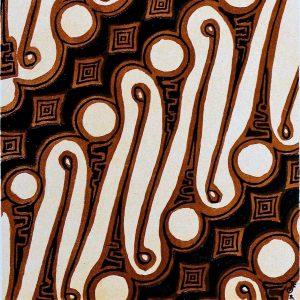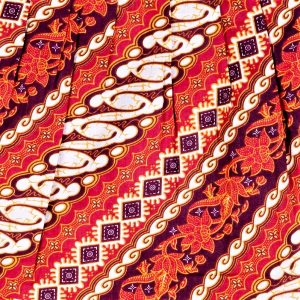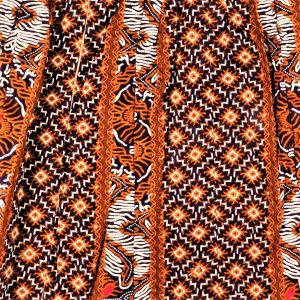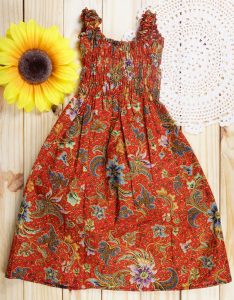Have you ever been so drawn to a painting that you became instantly mesmerized by its intriguing colors, elaborate patterns, and hidden motifs—almost to feel as though it were to come alive? Imagine a plain canvas of cloth come to life through a transformative and majestic textile art that uses wax and dye to fabricate elaborate patterns. Batik is this very type of art, or ‘painting’ that has evolved to be highly versatile in fashion and deeply earthed in its culture, history, and beliefs.
Clothing as art speaks stories and evoke emotion, and the cultural textile art of BATIK, rich in its Indonesian roots, holds its own curious mystique and significant themes. All batik motifs reveal some hidden meaning or reference to the past, and are often reflective of deep philosophies about life. Here we will spotlight several eye opening and majestic patterns that dominate the unique assortment of batik dresses featured in My Nonika’s One of Kind and Signature Collections. The batik process is an arduous task requiring professional techniques that are carried out with great precision to detail by the artisan to ensure high quality craftsmanship. Every pattern produced is an astounding and delicate work of art.
Each type of batik design carries its own legacy of graceful beauty and tells its own story, many which have been considered to have mystical powers or to resemble good fortune. While batik is strongly associated with culture and royalty, many of the motifs display geometrical abstractions of flowers (lotus), buds, and seeds, or symbolize nature in the form of animals or the elements of the earth.
Parang is a repetitive and diagonal pattern, consisting of white, wavy s-shaped lines that look like ocean waves bordered by dots and separated by diamonds. The name Parang means big knife or sword, and a parang knife is shaped in a similar way revealed by the patterns. The Parang Rusak, or ‘broken knife’ pattern, is seen in softer folds in a swooping blade fashion. What makes the Parang design so special is that it was exclusively reserved to be worn by royalty or used for ceremonial purposes, and recognized to encourage wisdom, nobility, and victory. Today it is one of the most popular and common batik motifs around.

Parang Motif

Parang Rusak Motif
The Kawung pattern is a simple design, based on the repetition of shapes—primarily squares, ovals, rectangles, and stars. This motif symbolizes the belief of people in a structured universe, with the kawung being the core and the four directions representing earth, fire, air, and water. The Kawung also symbolizes fertility and hope, and the flowers or palm blossoms signify purity and honesty. Alasalasan, or wood, is sacredly aesthetic and symbolizes the fruitfulness and protection of the earth. This pattern is orchestrated with an abundance of floral motifs that are often elaborated in gold detail and linings.

Kawung motif

Alas-alasan Motif
Clothes that carry meaning make wearing them all the more meaningful and unique. Nonika Baby and Toddler Batik Dresses are designed for that very purpose and sentiment. Stay with us on our journey to reveal more batik patterns in the future, and remember that Elegance is a Beauty that Never Fades.



Leave a reply